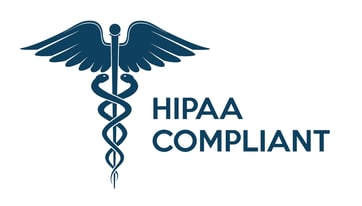Improving Medical Collaboration with Clinical Advisory Boards Software
 The relationship between pharmaceutical companies and medical stakeholders is often scrutinized by the public due to rising drug prices and ethical matters. Clinical Advisory Boards are one area to help build transparency, stifle ethical concerns, and provide the best medication and procedures possible to those in need. Often disparate in nature, these advisory boards are made up of diverse medical professionals from across the globe. Communication, organization, and decision making are not always easy and trouble arises when important information regarding drug trials, approved medications, and state of the art procedures are delayed due to miscommunication. Clinical advisory boards software is a necessary implementation to build rapport and restore an ideal communication channel between all stakeholders in the medical field.
The relationship between pharmaceutical companies and medical stakeholders is often scrutinized by the public due to rising drug prices and ethical matters. Clinical Advisory Boards are one area to help build transparency, stifle ethical concerns, and provide the best medication and procedures possible to those in need. Often disparate in nature, these advisory boards are made up of diverse medical professionals from across the globe. Communication, organization, and decision making are not always easy and trouble arises when important information regarding drug trials, approved medications, and state of the art procedures are delayed due to miscommunication. Clinical advisory boards software is a necessary implementation to build rapport and restore an ideal communication channel between all stakeholders in the medical field.
Clinical Advisory Board Software in the Digital Age
Clinical Advisory Boards have a variety of functions in the medical field. Pharmaceutical companies invest heavily in bringing the best drugs and treatments to doctors and their patients in the hope of better managing or even curing diseases. These new treatments and drugs are rigorously tested in multiple trial phases to determine that they are safe, tolerable, and more convenient than the current standard of care.
Clinical advisory boards seek to make sure that new drugs and treatments are seen as a valuable addition to doctors, patients, and diseases. They also decide if the market is ready for a new drug or treatment and oversee the successful launch of the product. “It is common that companies run multiple advisory boards at different stages of the life cycle of the drugs to address different objectives in the product life-cycle of the drug,” says Igea Hub. This is why it is imperative to keep each board connected and up to date by leveraging clinical advisory boards software.
Preparing for a Clinical Advisory Board Meeting
Clinical advisory boards are usually led by the medical affairs team. The manager or advisor of the medical affairs team should draft a detailed board agenda and ensure that all the questions of the stakeholders are addressed. The medical affairs advisor, who functions very much like a board administrator, also discusses the agenda, attendee list, dates, and locations with the board chair. They also send out invitations, brief speakers, organize flights and accommodations, review presentations, and manage contract signing and approval. Clinical advisory boards software is an element that can make the extensive job of the medical affairs advisor simple.

Clinical advisory boards software allows medical affairs advisors to manage all of their duties from one secure application. They can create meeting agendas in the integrated meeting minutes feature or upload an existing agenda. Discussions allow for the chair and advisory board members to collaborate on agenda items remotely from any device. Clinical advisory boards software also houses all board member contact information, which makes it easy to create attendee lists, send meeting invitations, track RSVP responses, and manage attendance. Updates and notifications keep board members informed with flight and accommodation information, as well.
Because of the disparate nature of these boards, clinical advisory boards software also includes military-grade eSignature technology that allows board members to sign documents from their preferred device. The tamper-evident encryption technology provides the medical affairs advisor with a legal audit trail to seamless contract management in and outside of regular board meetings.
Managing Meetings With Clinical Advisory Board Software
Advisory boards cover a variety of topics during meetings when discussing drug trials, clinical data, and the pathway the drug or treatment needs to take for approval. Clinical advisory boards software is one central location to house all materials including board books, meeting minutes, data, and documentation.
Clinical advisory boards software also makes the presentation process easier and more efficient to ensure proper time management in board meetings. Presentation mode allows boards to stay on the same page during presentations. Everyone using the clinical advisory boards software will be in sync, following along on their devices as the documents are presented. Board members’ screens will change simultaneously along with the presenter’s.
Another highlight of clinical advisory boards software is electronic voting technology. Voting on key pharmaceutical decisions are easy inside and outside of the boardroom. The medical affairs advisor has the opportunity to create a variety of ballot options including checkbox, radio buttons, text areas, and paragraph responses. Document attachment is also available for decisions that require supporting documentation. The adjustable results report is available to export with votes by a member, count, or percentage from the clinical advisory boards software.
Leveraging Technology Outside of the Boardroom
Technology can be used to bring people together, especially clinical advisory boards whose members are medical professionals from all over the world. Collaboration outside of the boardroom becomes even more important when clarification and approvals are needed for clinical trials and data. “Technology can bring advisers together from around the world at short notice to view data, share opinions and make decisions,” says PM Live. Clinical advisory boards software is a secure solution to board collaboration.
 Clinical advisory boards software allows for document annotation online and offline while Discussions foster collaboration across time zones, countries, and continents. If a board member needs clarification on data or the framework for a clinical trial time frame, they can chat in real time with other board members. The ability to have board materials on any device keeps board members engaged and the company budget in check.
Clinical advisory boards software allows for document annotation online and offline while Discussions foster collaboration across time zones, countries, and continents. If a board member needs clarification on data or the framework for a clinical trial time frame, they can chat in real time with other board members. The ability to have board materials on any device keeps board members engaged and the company budget in check.
Implementing an advisory board is a common practice for pharmaceutical companies when vetting new drugs and procedures. They function as a source of expert insight into a wide range of issues related to the drug or product’s life cycle. Advisory boards are even more important today with increased costs, laws, regulations, and diverse data needs from clinical trials. Clinical advisory board software helps these boards do their job more effectively by fostering organization and collaboration.
Other posts you might be interested in
View All Posts
Three Ways A Board Portal Transforms Board Administration
Read More
Leveraging Technology to Optimize Clinical Advisory Board Oversight
Read More
Why Mutual Fund Board Meeting Software is Necessary for Negotiating Advisory Contracts
Read MoreSubscribe to email updates
Get updates delivered directly to your inbox.
 Board Management Software for Better Governance
Board Management Software for Better Governance Govenda Brochure
Govenda Brochure